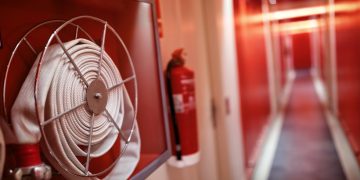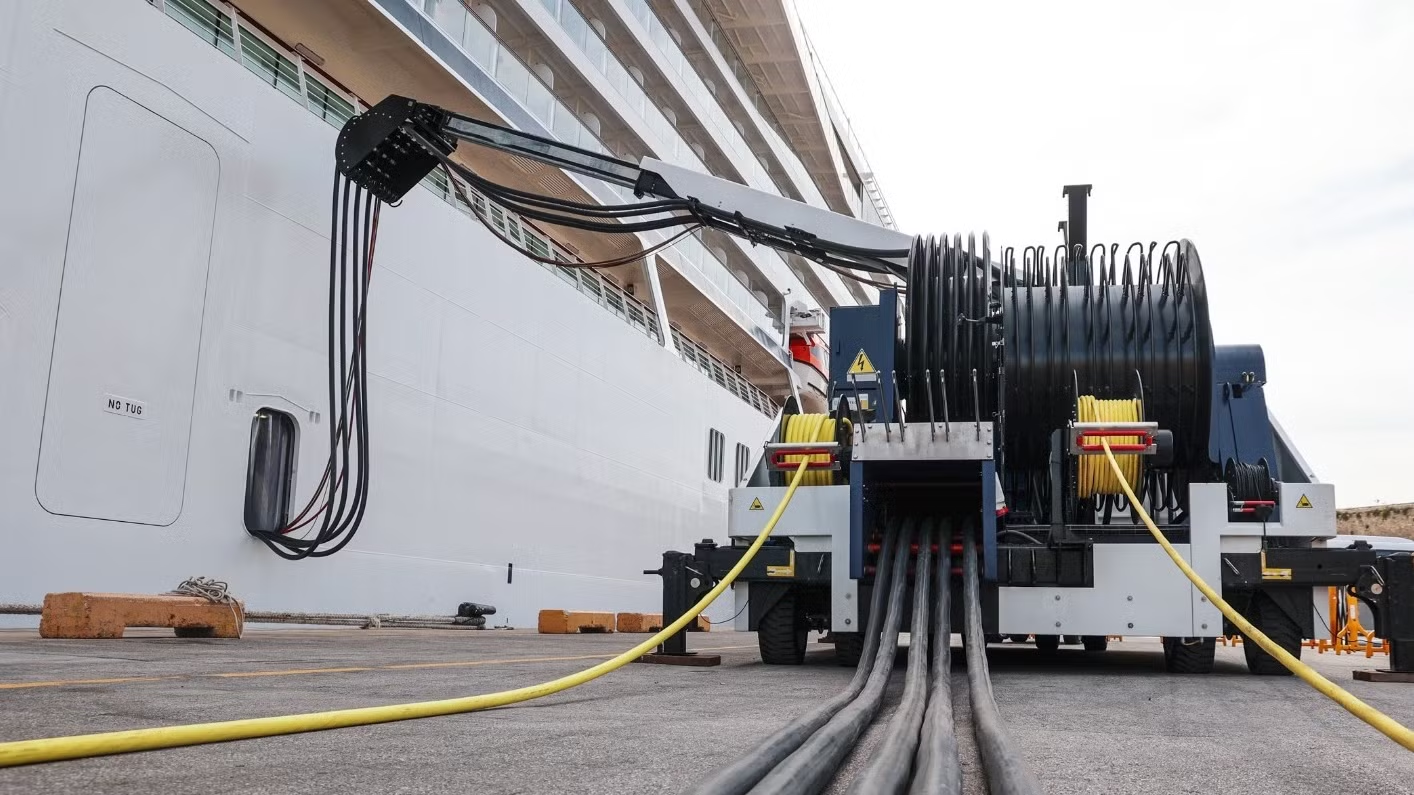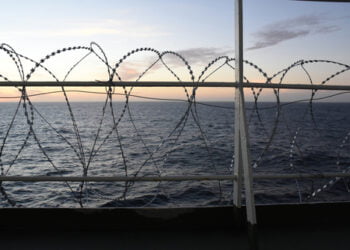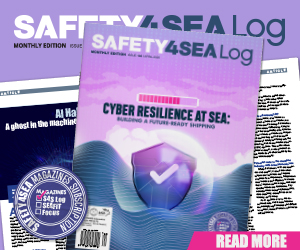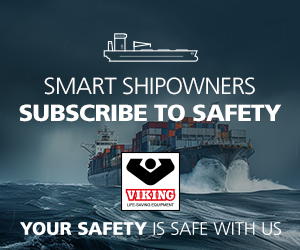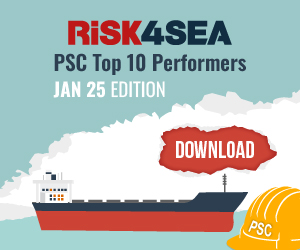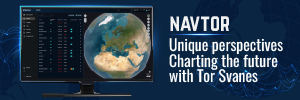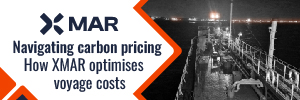The Vehicle Carrier Safety Forum (VCSF) has published its second set of industry good practice guidelines, the Fire Response – High Level Guidelines, providing key steps for operators to deal with fires onboard.
The VCSF acknowledges that responding to vehicle fires onboard PCCs, PCTCs, RoRo, and Ro-Pax vessels is both dangerous and complex. These guidelines aim to reduce risks to crew, passengers, the environment, the vessel, and its cargo by helping vessel operators and crews better prepare for such incidents. The VCSF is a consortium of vessel operators, insurers, and industry experts dedicated to promoting safety on vehicle-carrying vessels. The guidance is endorsed by the International Group of P&I Clubs, the International Chamber of Shipping, and the TT Club.
These guidelines are the result of industry collaboration focused on safety. We all share a common goal of making life at sea safer, and these guidelines should be viewed as a valuable tool for operators to develop their own instructions as part of their safety management system.
… said Geir Jorgensen, Chair of the IG P&I Ships’ Technical Committee.
Meanwhile, Lional Sharon, Senior Marine Adviser at the International Chamber of Shipping, noted that in February 2025, the IMO’s Ship Systems and Equipment (SSE) Sub-Committee had established an action plan to enhance fire safety measures for ships carrying new energy vehicles, such as Battery Electric Vehicles (BEVs), by improving fire detection, prevention, and extinguishing systems. He added that the guidance aligned with industry proposals and could support the IMO’s ongoing work.
It is intended for use by vessel operators when reviewing fire response policies, with an emphasis on employing existing fixed firefighting systems to control fires in their early stages.
Philip Bacon, Vice President Commercial Operations at Siem Shipping and a member of the VCSF Steering Committee, noted that vessel operators are concerned about fire response involving lithium-ion batteries, and the guidelines are designed to address this.
Response time
Time is the key factor in a successful incident response for either ICEV or EVs. Experiments show that ICEV and EVs alike commonly reach their peak heat release rate in 6 to 10 minutes from onset of fire. If the initial response does not have a fire under control within 10-15 minutes of the first alarm then use of Fixed Firefighting Systems (FFS) is recommended. Company policy should be clear that the Master has the authority to deploy FFS if the Master considers that a pre-agreed trigger event has occurred. Operators should develop their own triggers for early use of FFS taking into consideration:
-Is the fire developed? A confirmed fire in two or more vehicles can be considered as developed and vessel operators should consider a policy of using FFS at this stage.
Have multiple alarms been activated in the same compartment or fire zone? Where multiple alarms are activated, this may be considered as confirmation of a fire and vessel operators could consider a policy of using FFS without the need for personnel to enter the space. This will depend on the systems fitted and operators may still wish to confirm by other means.
Has a fire been confirmed by CCTV? If a developed fire is visible on CCTV vessel operators should consider adopting a policy of remote evaluation including the use of FFS without the need for personnel to enter the space.
Is the fire in EVs? If a fire develops in an area with EVs operators may consider adopting a policy of using FFS.
Early & correct use of FFS
A company policy of early and correct use of FFS should be implemented, communicated to vessel staff and clearly supported by company statements, documentation, training and drills. Lack of familiarity with FFS can lead to incorrect use. It is recommended that:
Drill scenarios, including the early deployment of FFS, should be realistic and carried out at regular and frequent intervals.
Improving speed of response should be an area that is targeted during drills. Drills should be developed for both port and seagoing operations.
Port operations response plan
Fires in port require a modified response. A detailed plan for in port response should be developed. Port operations plans should consider factors including
- Ensuring that third parties are quickly and safely evacuated from the vessel. It will be necessary to liaise with stevedores to develop a mutually agreed protocol.
the time it may take for the vessel to be cleared of third parties - Time for doors and ramps to be secured in order to segregate fire zones.
Consideration should be given to liaising with local fire services in ports that are regularly visited. A shared understanding of the vessel response plan, including chain of command, should be of benefit should a fire occur in port and fire service assistance is available. Drills including port fire response should be considered.
Where multiple operators visit a port it may be beneficial for all operators to work with the local fire service to establish a policy for response in that port
The guidance to carry out port drills involving port operators and firefighters is of particular relevance. Fire response is more complex during port operations, and it is important that the ship and shore side develop a shared plan for fire response in port.
… Mike Yarwood, Managing Director Loss Prevention at TT Club, highlighted.
Vessel construction
It is important that vessel construction, in particular fire resistance properties of decks and bulkheads, and ramp/ door operation points including means of escape are considered when developing plans for fire response.
Utilising the fire party
Where a fire is in its early stages and is not developed the fire party should be used to control or extinguish the fire. Where a fire party is attempting to fight a fire using local means, Masters’ should have in mind the agreed trigger points for use of FFS and should seek regular updates on fire development from the fire party. Vessel operators should consider the availability of firefighting equipment located at fire stations. See EMSA guidelines section 3.4.2.
Stowage plan
Vessel operators should ensure that the stowage plan is always kept as up to date as possible, including during port operations, and contains all essential information (including vehicles engine type). Stow plans on departure must accurately reflect the vessel as stowed. Upon completion of loading it may be useful to adapt fire response plans based on the stowage and numbers of EVs on each deck. A fire that spreads from an ICEV to an EV has the potential to increase the complexity of the fire response and the decision making process at various stages of fire response. Efforts to clearly identify EVs should be made by OEMs/consignors and consideration should be given to stowing them in blocks, lanes or other defined areas as/if appropriate/required. This practice could assist both initial firefighting decision making and subsequent decision making should a fire become developed or out of control.
Expert assistance
Vehicle fires have the potential to quickly become difficult to contain and may require prompt expert assistance or guidance. Consideration should be given to seeking early assistance from experts. Pre-identification of such experts may be beneficial.
Fires which have been brought under control
There is a risk that fires which have been brought under control may reignite. Vessel operators should develop policies and procedures to monitor the situation when a fire is controlled. The policies should take into account both ICE and EVs. Where a fire onboard has been brought under control the Vessel operators should seek expert advice on how to maintain control both at sea and in port. Where fires are extinguished care must be taken on re-entering the hold as a dangerous atmosphere or hazardous chemical residues may be encountered.
The vapour cloud
A vapour cloud is produced when the battery in an EV goes into thermal runaway. It is generally accepted that the vapour cloud is both explosive and toxic in nature. Hydrogen gas can also be emitted by traditional 12V car batteries. Boil off of fuel in ICE vehicles may also result in vapour cloud. Vessel operators should consider the explosive nature of the vapour cloud when developing their fire response plans. Large quantities of vapour may be emitted before a fire takes place or once a fire has been suppressed. There may be occasions when it is preferable to vent the vapour, as opposed to the usual practice of suspending ventilation during a fire and closing vents to atmosphere to mitigate explosion risk. Vessel operators should seek expert advice should they suspect a vapour cloud to have formed. Personal protective equipment should be of sufficient standard to prevent toxic gases coming into contact with crew. See EMSA guidelines. Vessel operators should consider the use of masks to protect those crew who are not directly involved with firefighting but who may have to pass through gases from all fires e.g. to access LSA.







